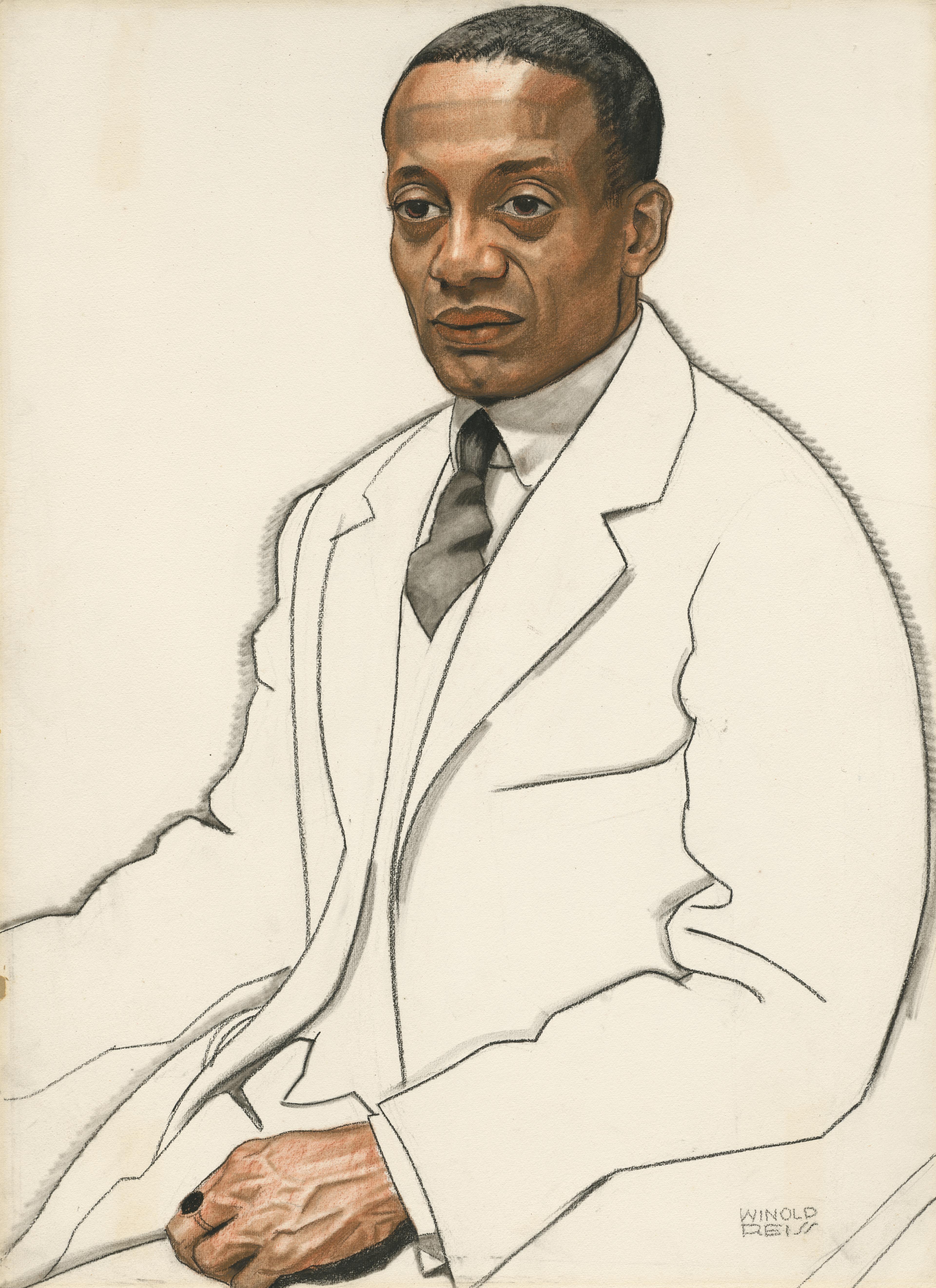Audio Guide

The Harlem Renaissance and Transatlantic Modernism
Hear artists and scholars reflect on key works in the exhibition.
To hear more from these conversations, listen to Harlem Is Everywhere, available wherever you listen to podcasts.
681. Winold Reiss, Alain Leroy Locke, 1925
Denise Murrell
This is Alain Leroy Locke by Winold Reiss from 1925.
DENISE MURRELL: Reiss was an immigrant from Germany who became the principal illustrator of Alain Locke’s seminal book, The New Negro that was the philosophical foundation of the movement. Reiss was also the teacher of Aaron Douglas, who was also an illustrator for The New Negro. What you're seeing here is an artist working with a visual vocabulary of Modernism that blends different genres. It's a painting, but it's also a drawing. It's a finely modeled, naturalistic portrayal of Alain Locke's visage, his face, and his hand, which harkens back to Renaissance portraiture and the focus on the head as a center of the intellect and the hand as a means of acting in the world. And not just the Renaissance, this existed in certain styles of West African sculpture, where the head was disproportionately large compared to the rest of the body. So, this is a broad-based idea that existed in multiple cultures. But he's making this as a study of a thinking person, a Black man who's engaging the viewer in a direct exchange, an exchange of equals. There's no subordination. There's no sense of putting on a face, the performance face. We're able to see the intellectual and aesthetic engagement of this foundational thinker of the Harlem Renaissance.
That was Denise Murrell, curator of the exhibition, The Harlem Renaissance and Transatlantic Modernism. To hear more from this conversation, listen to episode one of Harlem Is Everywhere, available wherever you listen to podcasts.
- 681. Winold Reiss, Alain Leroy Locke, 1925
- 682. Aaron Douglas, Miss Zora Neale Hurston, 1926
- 683. Winold Reiss, Langston Hughes, 1925
- 684. Hale Woodruff, Card Players, 1930
- 685. William Henry Johnson, Street Life, Harlem, ca. 1939–40
- 686. James Van Der Zee, Couple, Harlem, 1932
- 687. Charles Henry Alston, Girl in a Red Dress, 1934
- 688. Samuel Joseph Brown Jr., Self-Portrait, ca. 1941
- 689. Covers of The Crisis, Opportunity, and Fire!!
- 690. Augusta Savage, Lift Every Voice and Sing, 1939
- 691. Aaron Douglas, Aspects of Negro Life: From Slavery through Reconstruction, 1934
- 692. James Van Der Zee, Nude, Harlem, 1923
- 693. Archibald J. Motley, Jr., Black Belt, 1934
- 694. James Van Der Zee, Person in a Fur-Trimmed Ensemble, 1926
- 695. Laura Wheeler Waring, Mother and Daughter, ca. 1927
- 696. Roy DeCarava, Pickets, 1946
- 697. Romare Bearden, The Block, 1971
- Harlem Is Everywhere Podcast Trailer